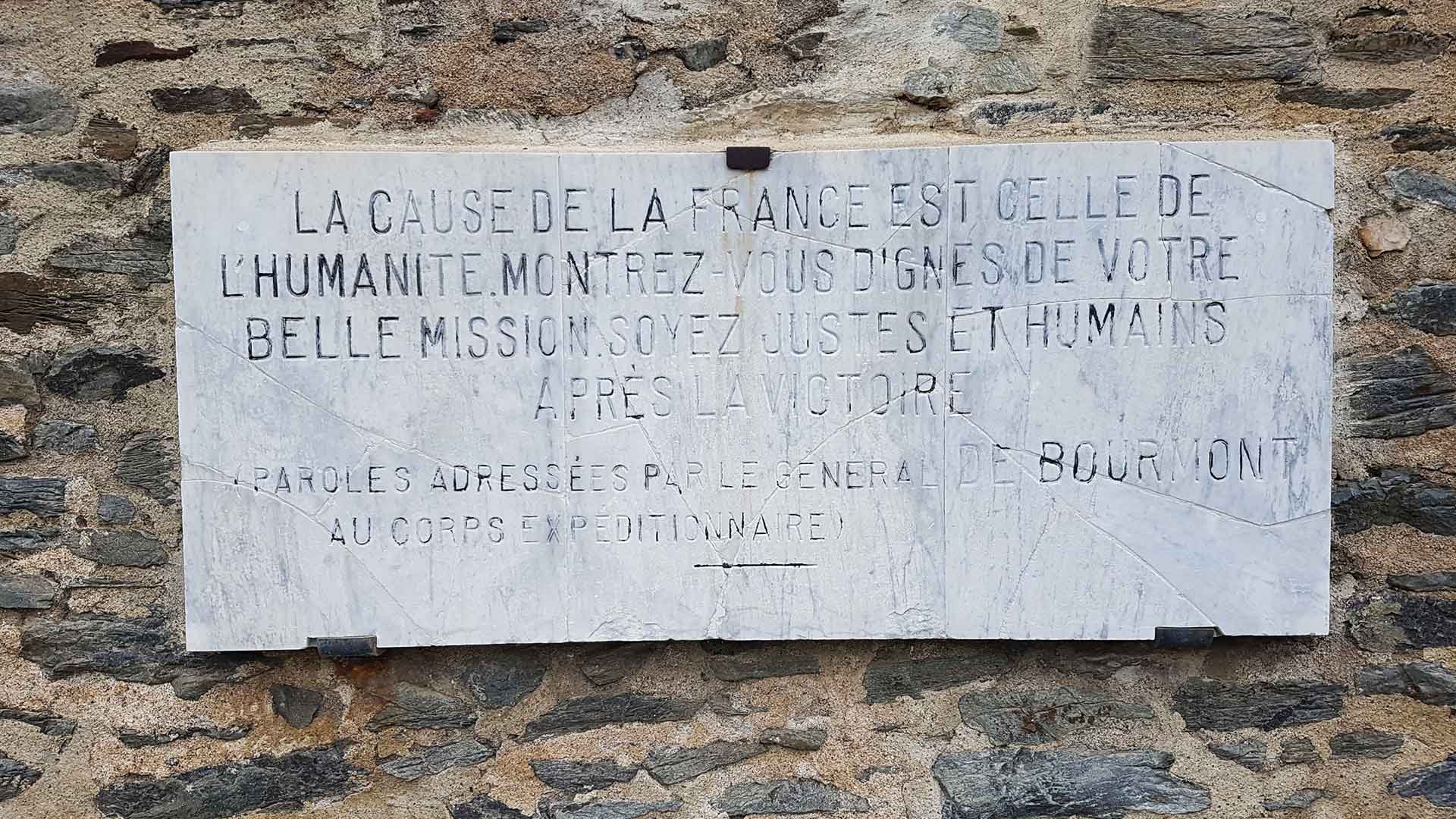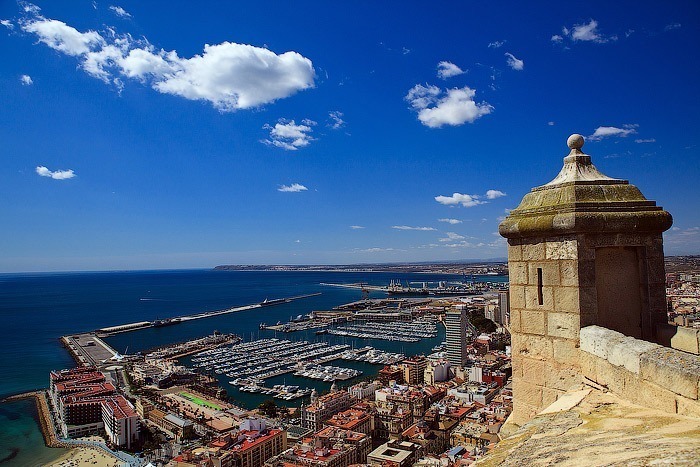‘Oranîmes’ - Susan Slyomovics’ interview with Pierre Claverie
Susan Slyomovics is Distinguished Professor in Anthropology at UCLA. She spent the autumn semester of 2019 in Marseille, researching a book on the afterlives of French colonial monuments. During this time she also reflected on previous time spent in both Nîmes and in Oran, urban centres linked by the presence of Notre-Dame de Santa Cruz. Here, she kindly shares details of her interactions with Pierre Claverie, the Bishop of Oran:
Between June 1990 and June 1992, I managed to spend as much time as possible in Oran on six successive Algerian cultural visas. Much of the time I stayed in the hostel attached to the Cathedral of Sainte-Marie, the seat of the diocese of Oran in El Maqqari (ex-St. Eugène). I owe my housing and much more to Pierre Claverie, who was the Bishop of Oran from 1981 until his assassination from a bomb placed near his car in 1996 that also took the life of his chauffeur, Mohamed Bouchikhi.
I can still hear his voice, literally, because I tape-recorded an initial interview and I continue to follow his writings. It took me decades to listen to him again and not without tears. I had given him my first draft in French of my 1995 article on the pilgrimage of the Virgin of Santa Cruz of Oran in Nîmes.* He had spoken to me of growing up in a « colonial bubble » (bulle coloniale), a topic he wrote about in letters to his family.** I had asked him about the « pied-noir » culture of Nîmes, since we both participated in the pilgrimage of the Virgin of Santa Cruz in the early 1990s during a time when attendance had peaked at over 100,000 pilgrims. The interview below has been edited and includes French transcription and my English translation. Since it occurred in Oran, the terms « here » (ici) and « there » (là-bas), as the pied-noir community usually deploys them, are reversed. Not « là-bas » for somewhere south over the Mediterranean Sea, but rather ici is « here » rooted in the space of Algeria.
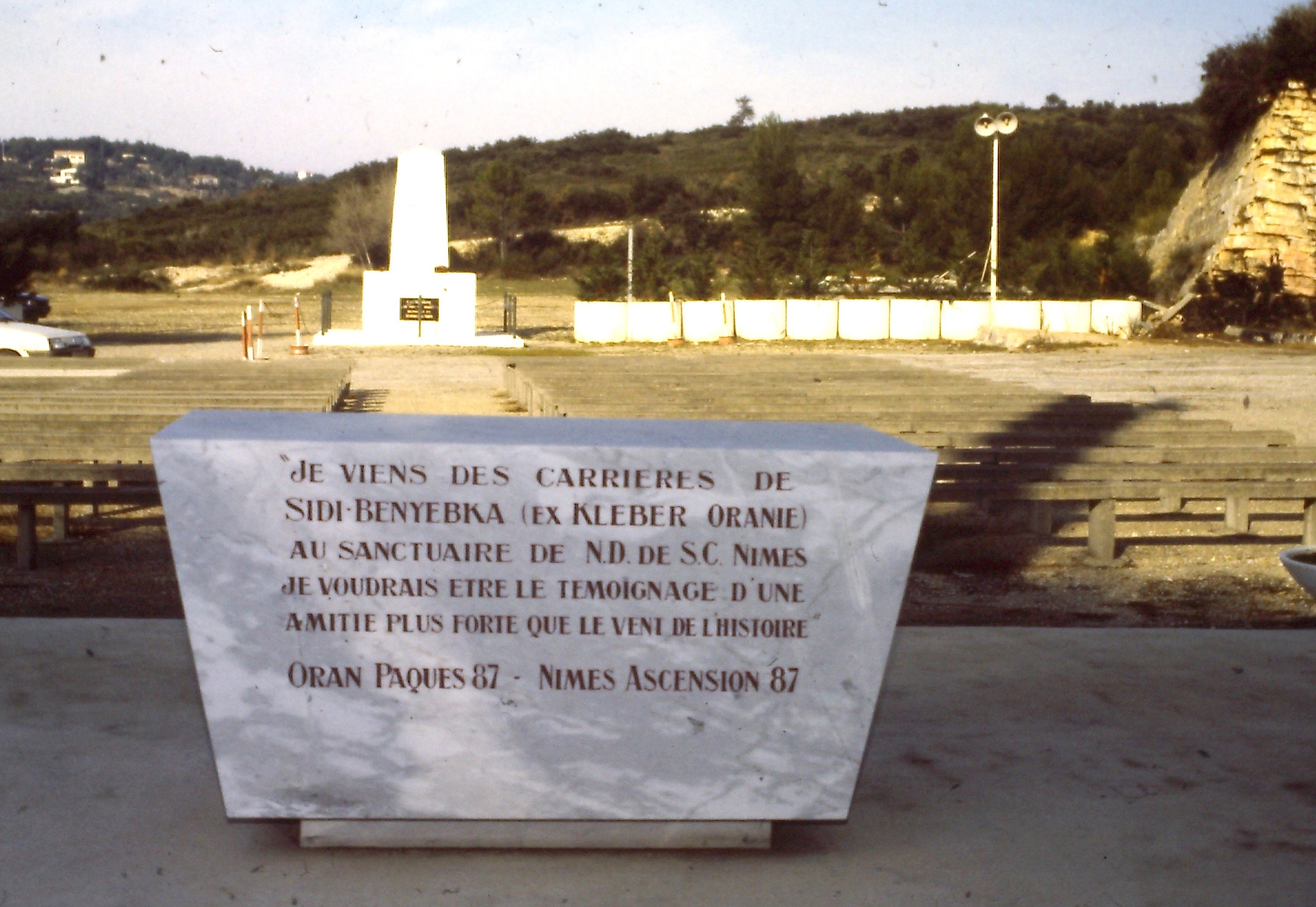
Notre-Dame de Santa Cruz, Nîmes: Facing the war memorial, the Sanctuary space still not built up, 1991
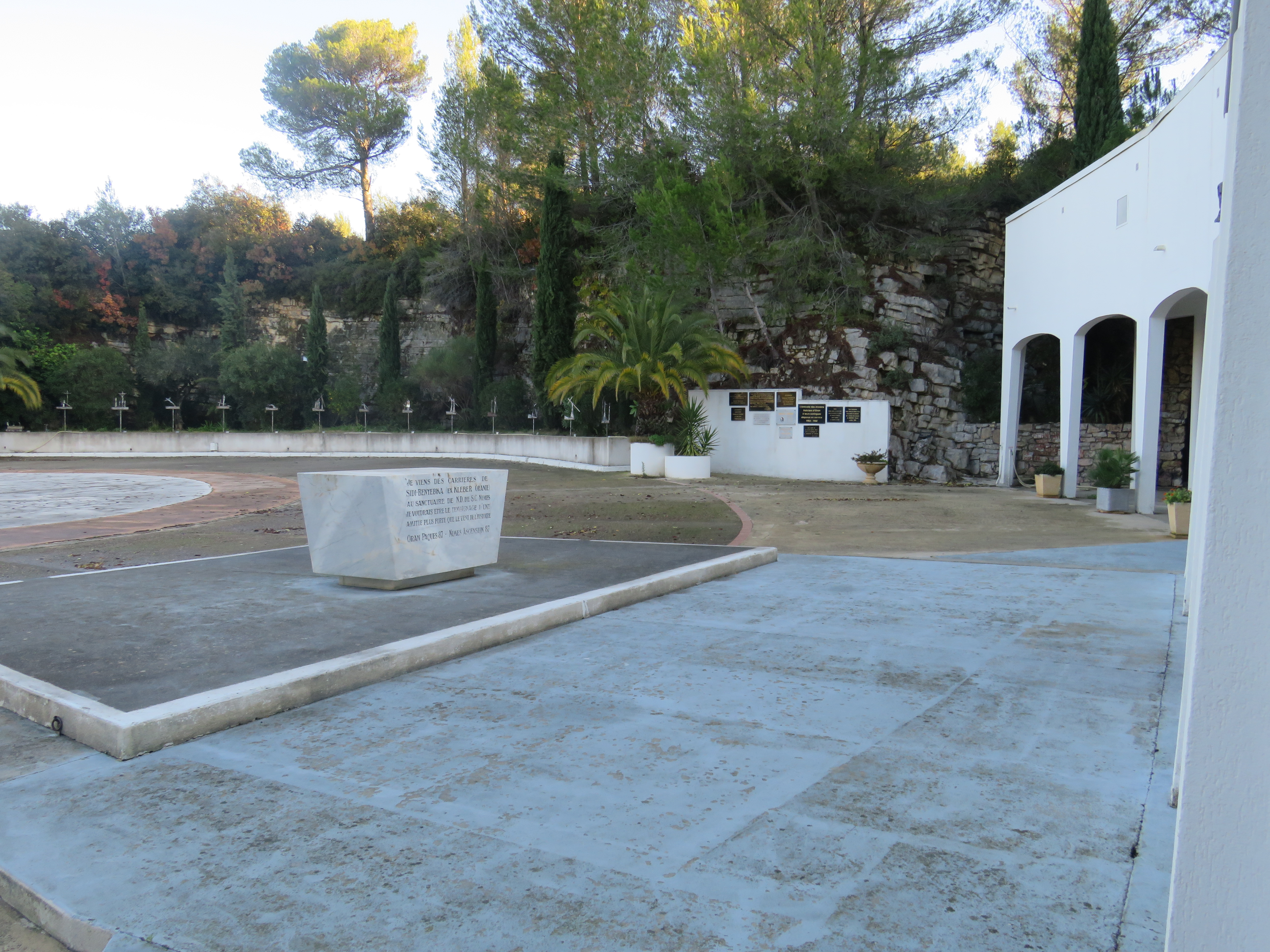
Notre-Dame de Santa Cruz, Nîmes; Facing the landscaped Sanctuary, 2019

New structures to welcome pilgrims
Mary's body had been assumed into heaven along with her soul. … [Article 25] … out of filial love for his mother, Jesus Christ has willed that she be assumed into heaven. They base the strength of their proofs on the incomparable dignity of her divine motherhood and of all those prerogatives which follow from it. These include her exalted holiness, entirely surpassing the sanctity of all men and of the angels, the intimate union of Mary with her Son, and the affection of preeminent love which the Son has for his most worthy Mother.”
Hence if anyone, which God forbid, should dare wilfully to deny or to call into doubt that which we have defined, let him know that he has fallen away completely from the divine and Catholic Faith.
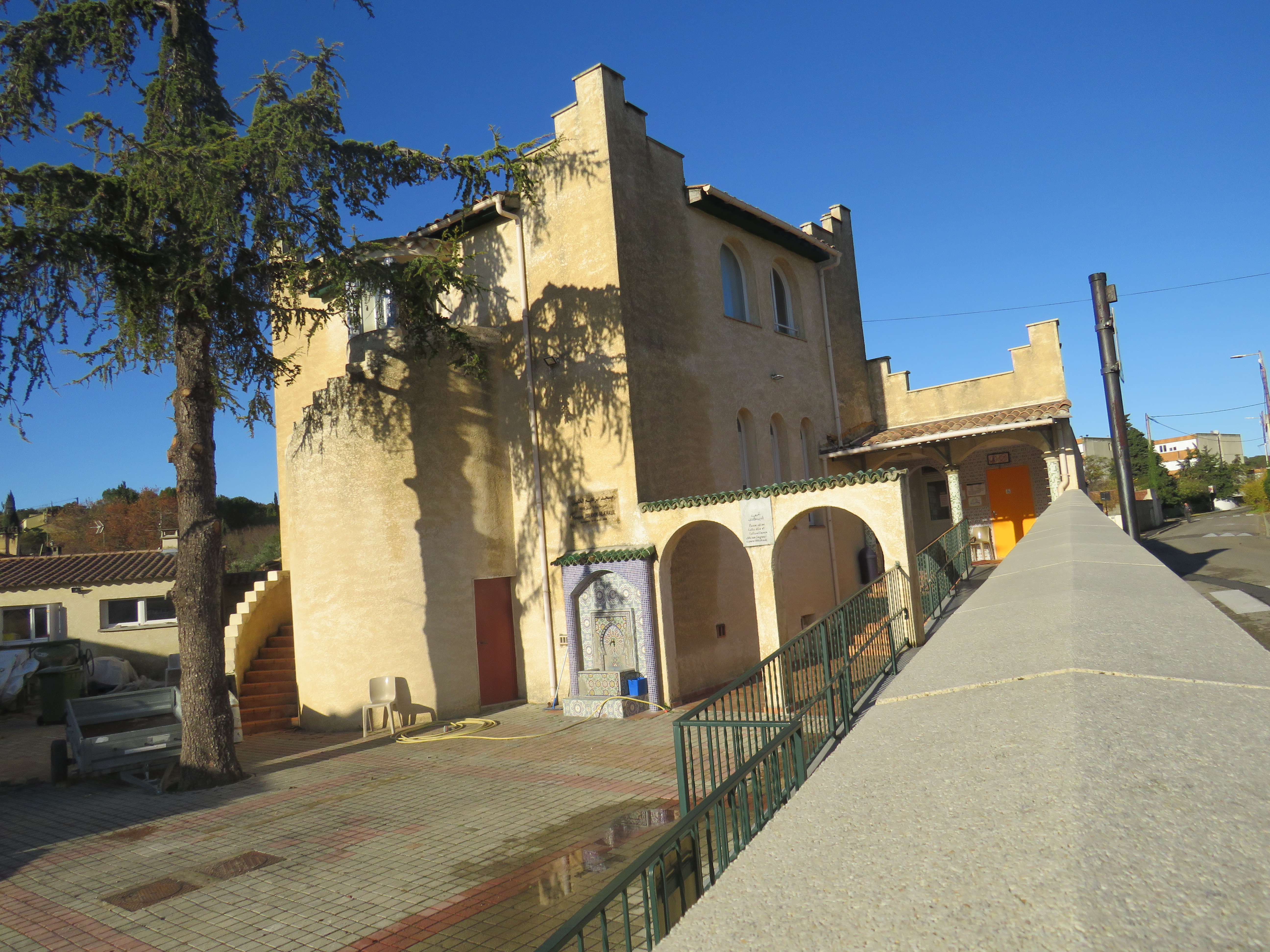
Mosque of Al-Khalil
In our interview, Père Claverie returned to the early days of the original pilgrimage in Oran. Within the European settler colonial population in nineteenth-century Oran, there were cleavages between the French clergy and the predominantly Spanish worshippers that even their shared Catholic faith could not mask. These differences were reflected in the two statues of the Virgin Mary that reside on Mount Murdjajo : the Virgin on top of the Basilica made from the same mould as the Virgin Mary of Fourvières in Lyon and the smaller Spanish wooden statue of the Virgin Mary in the lower grotto that actually launched the first pilgrimage :* Susan Slyomovics, “Algeria Elsewhere: The Pilgrimage of the Virgin of Santa Cruz in Oran, Algeria and Nimes, France,” in Folklore Interpreted: Essays in Honor of Alan Dundes, edited by Regina Bendix and Rosemary Levy Zumwalt, 337-354 (New York: Garland Press, 1995).
** Pierre Claverie, Là où se posent les vraies questions: Lettres familiales 1975-1981 (Paris: Les Éditions du Cerf, 2012).
*** The apostolic constitution is available on the Vatican website at http://www.vatican.va/content/pius-xii/en/apost_constitutions/documents/hf_p-xii_apc_19501101_munificentissimus-deus.html
+ Susan Slyomovics, “The Virgin Mary of Algeria: French Mediterraneans En Miroir.” Special issue: Remapping Mediterranean Anthropology, edited by Naor Ben-Yehoyada, Heath Cabot, and Paul A. Silverstein, History and Anthropology, in press for printed copy. Online pre-publication link: https://doi.org/10.1080/02757206.2019.1684912
++ Dionigi Albera and Jean-François Robert, La Vierge d’Oran et la Mosqué d’Abraham. DVD. Directed by Dionigi Albera and Jean-François Robert (Aix-en-Provence: IDEMEC, 2009); and Dionigi Albera,“The Virgin Mary, the Sanctuary and the Mosque: Interfaith Coexistence at a Pilgrimage Centre,” in Gender, Nation and Religion in European Pilgrimage, edited by Catrien Notermans, 193–208 (London: Routledge, 2012).
Marseille, December 2019


